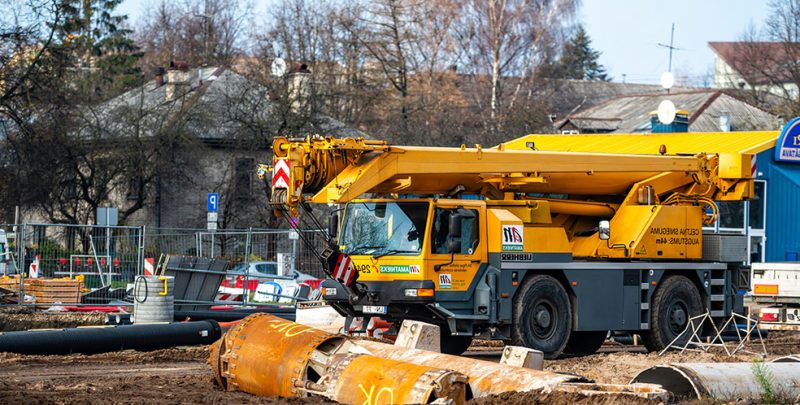Making preparations for transporting heavy equipment

It is certainly not very easy to legally and safely transport heavy construction equipment and cargo. When some of the biggest machinery pieces build by mankind are involved, there is need of set transportation, load, and unloading protocol. This is the only safe practice! In this article, we present a guideline that you can use for safe heavy machinery moving.
Making preparations to transport construction equipment
On construction sites, most of the injuries occur during the unloading and loading of heavy construction equipment. In this regard, preparation is the prime key for safety! In order to avoid accidents related to construction and to reduce the liabilities, it is important to take some safety measures right from the start.
These include the following:
Performing and documenting a risk assessment
Normally, it is the responsibility of the rigging company to dot down all the risks and hazards that may be involved. Generally speaking, risk assessments are documents that reflect how thorough and detailed the processes of your fleet management are.
Usually, this is done by a supervisor or a senior manager. The document will usually contain a transportation timeline, and details of the entire operation. It will also include the weight loads, along with the project risks and the measures taken to address the risks.
Ensure that the crew is wearing personal protective equipment
Without any exaggeration, safety practices are the only backbone of the construction industry. Hence, it is very important for the crew at a workplace to be wearing complete personal protective equipment. In fact, this is a standard that is followed throughout all operations related to construction. Hence, it is not only limited to the legal and safe transportation of cargo.
Unfortunately, however, personal protective equipment is something is often overlooked. This especially applies to areas where there is a lack of regulations. In such sites, people often take shortcuts to quickly for transporting cargo in order to move on to the next project. However, this comes with great risks and often results in fatal accidents. The documentation of personal protective equipment is a useful strategy for risk-mitigation.
Making an inspection of the crane
Next up, you have to do a thorough inspection of the machinery that will be involved in transport of heavy equipment. Cranes are widely used throughout a number of sites for lifting up heavy pieces of equipment such as cargo, containers, construction equipment, and a lot more. However, like every other piece of machinery, cranes too have a maximum capacity. If this capacity is exceed, there is a risk of tipping over or breakage, which may be very fatal!
Hence, safe operation of cranes is no joke at all! Rather, it is something that must be taken very seriously and should always be managed by responsible supervisors.
A complete inspection of a crane may include:
Brakes
Crane trucks are not generally the same as regular tricks. This is because the braking ability of the vehicle will change, depending on the load that the crane has lifted. In this regard, make sure that all the brake components are working perfectly!
Tires
Some types of cranes are attached to trucks and trailers. In this regard, it is extremely important to inspect the tire pressure and condition.
Weight capacity
All cranes have a specific weight capacity that you cannot exceed. Make sure that you document the capacity properly, and that the load does not exceed this number.
Ending note
Industrial rigging DC requires special operators, that often have to be hired separately. In case you are renting a crane, chances are that a certified operator will be provided to you. Regardless of that, transportation of heavy equipment should always be done by certified supervisors and experts. Remember, that it is not a DIY project!










